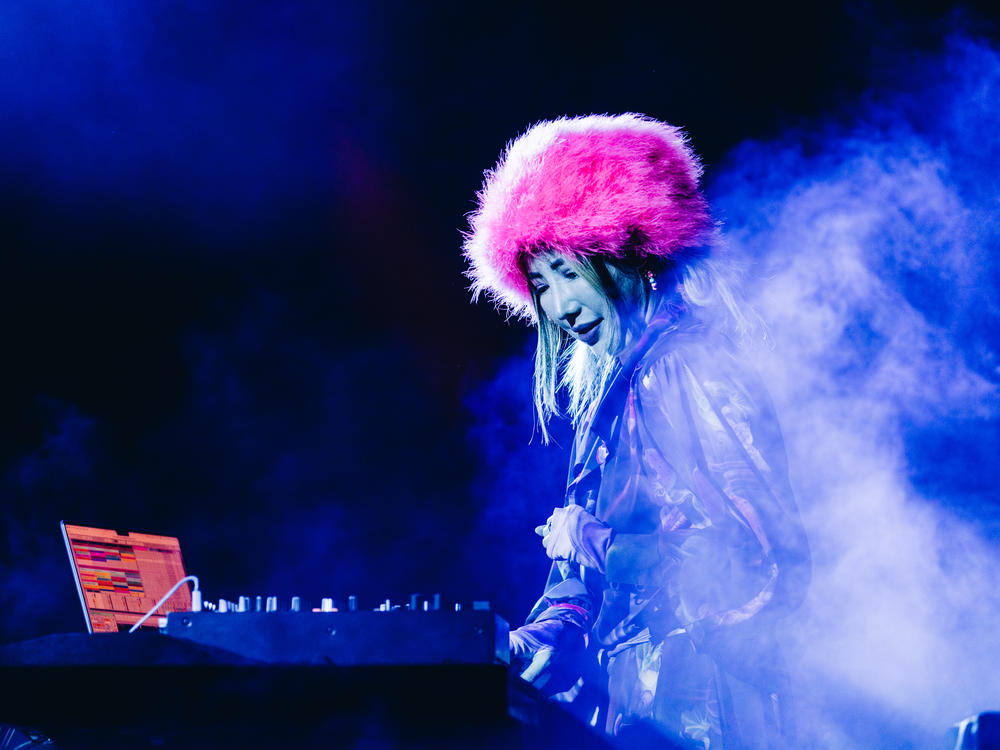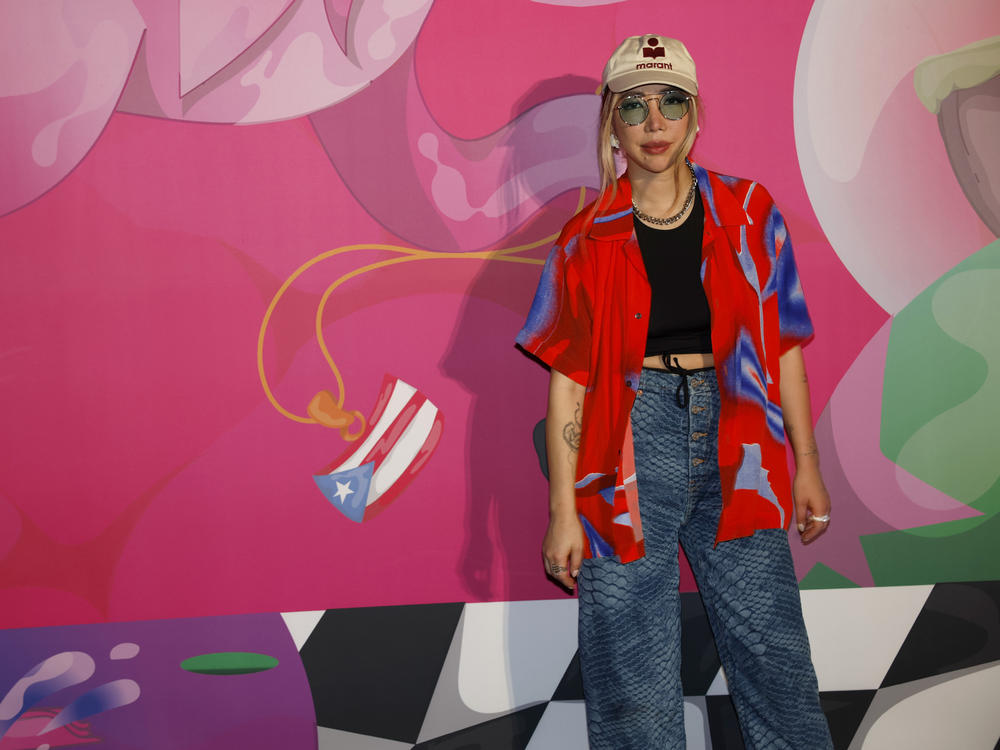Section Branding
Header Content
Brain surgery left TOKiMONSTA unable to understand music. Now every song is precious
Primary Content
Listening to her now, it's hard to fathom that there was a time just a few years ago when electronic music producer and DJ Jennifer Lee — aka TOKiMONSTA — suffered from aphasia so severe that she was unable to speak.
In 2015, TOKiMONSTA was diagnosed with Moyamoya disease, a rare progressive cerebrovascular disorder that put her at risk of a sudden aneurysm or stroke. The two brain surgeries that followed, in January 2016, left her with alarming side effects, including acute aphasia.
"I couldn't communicate anymore," TOKiMONSTA says. "English, which was essentially my first language, became a foreign language. Anytime someone talked to me, anytime I watched TV, anytime there was a spoken word, it just sounded like a foreign language."
Though TOKiMONSTA had taught herself how to make electronic music in college and had created her own label, Young Art Records, in 2014, after the surgeries she found that music had become unrecognizable, just noise. "At that point, I realized something was wrong," she says.
Just two months after her brain surgery, TOKiMONSTA pushed herself to begin making music again. During her recovery she created one of her most personal albums, Lune Rouge. It earned a Grammy nomination for Best Dance/Electronic Album, making TOKiMONSTA the first female Asian American producer to receive a nomination in the category.
Looking back now, TOKiMONSTA describes the connection between her "thinking mind" and her music as a bridge. During the surgery, the bridge was broken down, but over time it was rebuilt. She now hears and appreciates music just as she did before — but philosophically, she says, everything has changed.
"I know how precious music is," TOKiMONSTA says. "It's like being starved and having your first bite to eat. Every song has a level of excitement to me that is precious, and more precious because I know that it can be taken away."
Interview highlights
On "I Wish I Could," the first song she wrote after surgery
The first time I opened up my laptop, I had already been able to speak again, so I was OK speaking and listening to people on TV. All that stuff had come back. So I thought this was an excellent time for me to consider trying to create again. But when I had opened my laptop to make music, I realized that whatever part of my brain that could do that was not there, yet. I tried, and it was an attempt, but it was not good at all. And it was not up to par with how I had been making music. So instead of mulling over it or being depressed, I decided just to shut my laptop and give it a break, give myself some more time to heal. I was just a month and a half out of brain surgery. How am I going to make a song?
So I gave myself the time and really I'm pretty sure it was about a week later that I just started making this song and it came together. And the feeling inside that you have when anyone makes an amazing song is incredible. There's nothing better than that feeling. But with this particular song, it meant so much more than just making a good song. To me, it meant that I was OK. With this song, when I listen back, still brings me back to that moment and how hard it was and shows me that I can still be here to this day feeling those feelings, but knowing I've made it this far.
On teaching herself how to make electronic music in college
My first delve into being creative with music would probably be the piano. When I downloaded software in high school, that was the first attempt at trying to make music. I downloaded a program. I opened it. It looked so intimidating that I just uninstalled it, because at that time computers didn't have a lot of space. ... I put it to rest. And then fast forward to my first year in college. I download a different production software. A friend of mine shows me a very basic way to use it, and I became obsessed. I was watching YouTube tutorials, I was going on the website, reading their tutorials. ... It just became something that became my whole world, my whole focus. It was the hobby of all hobbies. I finally figured out a way to express all these ideas that I had swirling inside me.
On doing field recordings to integrate into her music
I feel like there's something about field recordings, which is what we call this, that gives your music a specific sonic signature that no one else will have. Because if I record the waves crashing, or an airplane flying overhead, that particular moment will only happen once in time. You'll never be able to recreate that same wave or that same airplane or that same car door shutting. And in that way, that song that I use it on will also remain completely unique.
Origins of her DJ name "TOKiMONSTA"
In short, it was a chat screen name. We all had one back in the day. And I've also come to realize a lot of other musicians have used their chat name as their artist name. You just have to ask around. So "tokki" means rabbit in Korean, "monsta," I guess I thought it was a cool way to write monster when I was 16. But I can't take it back because this has been my name now for many years.
In the very beginning, maybe when you see "TOKiMONSTA," you assume that I make really aggressive music and I think I've been around long enough and people know that, "Oh, TOKiMONSTA makes like cool, chill, fun stuff." I've redefined what it means to be TOKiMONSTA. And in many ways that name represents me because of the juxtaposition of "tokki," which is really cute and then "monsta," which is this scary being. It shows very much in the music that I make. There are moments where my music is very quiet and then I have music where moments where my music is loud, are beautiful and disturbing or light or heavy. And now more than ever, I do feel like I identify with my name and I'm proud to have it be a part of my life.
On performing at Coachella in 2016 in front of 15,000 people
When you look at a group of people like that, they almost become one organism. And in this shared experience, we all become this one living, breathing thing. And their energy is a reflection of my energy and back and forth. We're just drops of water undulating in this massive sea. And I guess for me, it was another sign that I had passed the worst part. I was physically able again to perform. I was able to feel confident again at that moment.
On electronic music being male-dominated
Let's say 10 or 13 years ago when I was just making beats in LA with my peers, I didn't want anyone to know that I was a girl. I didn't want anyone to know what I'd look like. So if we think about that MySpace era when everyone had their songs listed, you had your top eight or whatever. I never posted my photo on my accounts. I wanted it to be a mystery because I didn't think it was necessary to show my identity, as it could be used as a means to judge my music unfairly. And that was the reality at that time. It's probably still the reality to some degree now, though I think it's improved quite a lot.
[When I started,] people were attributing my own talents to men I had dated, or they assumed that there was no way it could have been coming from me and must have been someone else making it for [me]. And because of the environment that I was in, it made it so important for me to show everyone that I make the music that I make. It became very important for me to also mix down and engineer all the music I make, so people knew that this person was doing all of it.
Lauren Krenzel and Susan Nyakundi produced and edited this interview for broadcast. Bridget Bentz, Molly Seavy-Nesper and Lars Gotrich adapted it for the web.
Copyright 2023 Fresh Air. To see more, visit Fresh Air.


